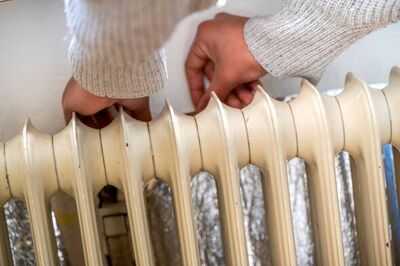As the chill of autumn begins to bite, many homeowners are seeking practical ways to keep their homes cosy without having to crank up the heating. Energy-saving solutions are top of mind with heating bills on the rise.
Paul Brewster, CEO of Flooring Hut, has shared some expert tips with Leicestershire Live about how to maintain a warm home whilst also keeping those dreaded energy bills at bay. His helpful advice centres around making smart choices and small adjustments to ensure your home stays snug during the frosty months.
From sealing draughts to boosting the warmth of radiators, Brewster's tips are simple to put into practise, creating a more comfortable, energy-efficient home.
Install reflective insulation behind radiators
Fitting reflective foil behind your radiators will direct heat back into the room instead of letting it escape through the walls. You can use tin foil as a cost-effective solution that costs less than £2.
By adhering to these easy tips, homeowners can keep their homes warmer while saving on heating expenses during the colder months.
Add a rug or two for extra warmth
Not only does a rug add a homely touch to any room, but it can also help to trap in heat, making your room feel cosier and more comfortable.
Rugs are particularly effective for providing additional insulation on hard surfaces such as tiles, hardwood, or laminate. If your home has wooden floors, it might be worth investing in a thick rug to help retain heat and create a more comfortable environment.
Wool rugs are particularly effective, but if purchasing a new rug isn't feasible, layering blankets or even cardboard underneath can significantly improve insulation.

Seal gaps and cracks in solid wood flooring
Sealing any cracks and openings can reduce drafts and cold spots, helping your home maintain warmth for longer periods.
Even minor gaps between floorboards or near walls can allow heat to escape, but sealing these cracks is an easy and cost-effective solution. Use a wood filler that matches your flooring to ensure your home remains warm and energy-efficient throughout the winter months.
Use thermal curtains or draught excluders
Windows and doors are often the main culprits when it comes to heat loss. Thin curtains or blinds provide little protection against the cold, allowing warmth to escape and cold air to seep in, whereas thicker curtains will better insulate your room.
Another option is using draught excluders at the base of doors and along windowsills. Draught excluders, which can be bought or easily made at home, are excellent at preventing cold air from entering while keeping warm air inside.
During the day, open curtains to let in the sun's natural warmth, and close them in the evening to keep the heat retained inside.
Keep internal doors closed
While it's tempting to leave doors open between rooms for a more spacious feeling, this can result in heat loss. By ensuring internal doors are shut, you're aiding in confining warmth to each room and maintaining a cosy temperature throughout.
This is particularly crucial in rooms with carpets or rugs, where heat is more readily retained.
Shutting doors can also assist you in saving energy by enabling you to concentrate on warming the areas that are most frequently occupied, rather than attempting to heat the whole house simultaneously.
You may also like

'I own the UK's most haunted doll - he's made my life a living hell'

Odisha braces for Cyclone 'Montha': Eight districts on Red Zone list

Mann ki Baat: PM Modi extends greetings on Chhath puja, lauds Ambikapur's 'garbage cafe'

Uttarakhand CM Dhami attends closing ceremony of Devbhoomi Cultural Festival, says event to give boost to bond between Army and public

Arsenal's next five fixtures compared to Liverpool and Man City after Crystal Palace win







